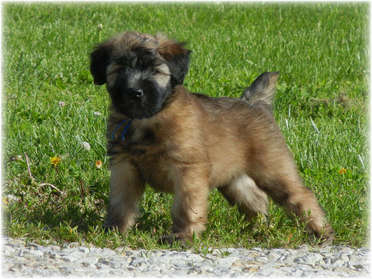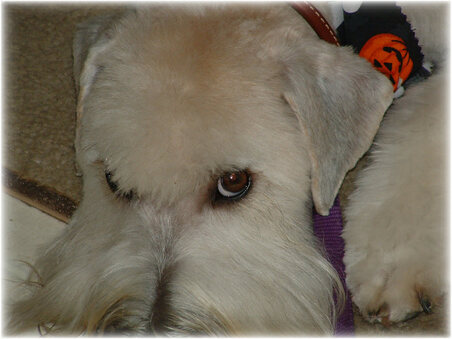f12 bet app baixar
bellagio casino online
Please scroll down the page app aposta esportiva theesports site de apostasto view our panda betbet354
We’ve spoken about how to calculate poker ranges, so let’s take a look at a real-world
example. To give you an insight into how it works, let’s take a look at a hand I played
recently where I was able to successfully evaluate my opponent’s range and use it to my
advantage.
The hand starts with our opponent raising toR$8 from UTG in aR$1/$2 9-max
live cash game. This particular opponent had just sat down, so I didn’t have much
information on him. Therefore, I assigned him a standard UTG opening range of 22+,
ATs+, KJs+, QJs, JTs, T9s, 98s, 87s, AJo+, and KQo. I was in the big blind with 6d5d,
so I made the call.
We saw a flop of Kc9d5s, which gave me bottom pair. Given our
opponent’s range, I know that this flop is good for my opponent, as they have all the
best Kx hands, all the sets, as well as hands like AA, whereas I only have a few of the
good Kx hands and all the sets. However, I also know that our opponent is going to have
a lot of hands that missed, such as his broadway hands without a king, and all of his
Ax hands.
Our opponent c-betsR$6 intoR$17, so I have to think about the range of hands
he’s c-betting. Considering the small bet size and the fact that this board is good for
our opponent’s range, it’s likely that our opponent is betting their full range in this
situation. So, at this point, I need to consider how my hand plays against my
opponent’s range, and with bottom pair and a backdoor flush draw, I have an easy
call.
The turn brings the 6s, giving me two pair. I check again to my opponent, who
makes a big bet –R$25 intoR$30. Given the large sizing, my opponent won’t be betting
their entire range anymore, so I need to think about what hands would want to bet this
size. It’s likely that all of his best top pair+ hands will want to bet this size, so
for value, we can give our opponent KJs, KQ, AK, AA, 55, 66, 99, KK, 87s. But what
about the bluffs? There are still a number of straight draws available, so it’s likely
that our opponent will bluff with hands like QJs and JTs. The turn has also brought in
a backdoor flush draw, so all of his Ax of spades will likely continue betting this
turn. It’s also possible that our opponent will continue to bet strong Ax hands with
the ace of spades, so they can continue bluffing on a spade river.
Given the action, I
think we can eliminate hands like 98s, all pocket pairs below KK that aren’t a set, Ax
hands without a flush draw, and offsuit Ax hands without the ace of spades. This leaves
my opponent with the following range going into the river:
KJs+, AKo, KQ, AA, 55, 66,
99, KK, 87s, QJs, JTs, Ax (of spades), AsJ, AsQ.
Considering my opponent’s betting
range, I feel like my two pair is strong enough to continue, as not only do I beat some
of my opponent’s bluffs, but I also beat some of their value bets.
The river comes the
Ah, and our opponent makes a pot size bet ofR$80. This puts us in a trick position with
our hand, so let’s consider what hands in our opponent’s range would bet like
this.
Given that the ace hit the river, it’s unlikely that our opponent will be betting
a single king for this size, so we can now rule out KJ and KQ. Hands like AK and AA
have improved to a set, so they’re going to bet, as will all of our opponent’s sets and
straights from the turn. Some of our opponent’s bluffs, such as Ax of spades and
AsJ/AsQ have now improved to top pair, but it’s unclear whether or not they would bet
full pot with just one pair. However, not all of our opponent’s turn bluffs have made a
pair, so it’s likely they’ll continue bluffing with QJs and JTs.
So, our opponent’s
value range likely looks like this:
AK, 55, 66, 99, KK, AA, 87s
And their bluffing
range will likely look like this:
QJs, JTs
Given the ratio of likely bluffs to likely
value hands, our two pair doesn’t win often enough against such a big bet to make a
profitable call. With this information, I decided to make the fold, and my opponent
showed me AA for rivered top set.
Using my understanding of ranges, I was able to make
profitable calls on the flop and turn and get away from my hand when it was no longer
good on the river. These are the kinds of deductions you should be making during each
hand you play.
RANGING yOUR oPPONENTS
Being able to put your opponent on an accurate
range of hands is one of the most important skills you can have as a poker player.
Thinking in terms of ranges allows you to make the best possible decision against all
the possible hands your opponent can have in any scenario.
However, it’s tough to be
able to think through all the possible permutations while you’re playing, and it’s even
hard for your estimates to be right all the time!
This is why learning this concept
inside out and practicing it whenever you play is vital to improving and becoming a
winning poker player. We’ll be guiding you through the process of figuring out your
opponent’s range street by street, so you can play as accurately as possible from the
first betting round to the last.
PREFLOP Poker RANGE
A preflop range chart is a visual
representation of a range of hands that a player will play from a specific preflop
position. It’s a way of visualizing a range and better understanding it, rather than
reading the poker notation and trying to memorize it that way. The more you familiarize
yourself with these charts, the easier it becomes to picture them when playing
Let’s
have a look at some you might be familiar with, starting with a nine-handed UTG raising
range:
As you can see, there aren’t many hands being played; all the focus is around
the top left-hand side of the chart. When looking at these charts, remember that the
best hands are in the top left and the worst hands are in the bottom right. Let’s look
at a wider range to see how they compare, this time a BTN opening range:
That’s a lot
of hands to try and keep track of when you’re in-game! If you’re having trouble
remembering them all, try grouping certain hands that all play roughly the same, like
all Qx, all Kx, all Jx, etc.
Some players have preflop charts like these for each
position, as it helps them remember their preflop raising range. However, it’s
important to remember when you should use these charts; the UTG chart should only be
used for that position; played anywhere else and the raising range would be too tight.
Similarly, the BTN raising range should only be played from the button; the raising
range would be far too wide for any other position.
It’s also important to remember
that these range charts only apply to preflop ranges. As you move into postflop, things
like board texture will affect your range, so these charts should not be used.
To help
you with your preflop ranges, we’ve posted some commonly used preflop raising and
calling ranges that you can use in-game.
PREFLOP: COMMON RAISE RANGES
UTG Raise First
In 9% = 66+, AJs, KQs, AJo+, KQo
= 66+, AJs, KQs, AJo+, KQo Early Position Raise First
In 15% = 22+, ATs+, KJs+, QJs, JTs, T9s, 98s, 87s, 76s, 65s, AJo+, KJo+, QJo
= 22+,
ATs+, KJs+, QJs, JTs, T9s, 98s, 87s, 76s, 65s, AJo+, KJo+, QJo Middle Position Raise
First In 20% = 22+, ATs+, KTs+, QTs+, J9s+, T8s+, 98s, 87s, 76s, 65s, 54s, ATo+, KTo+,
QTo+, JTo
= 22+, ATs+, KTs+, QTs+, J9s+, T8s+, 98s, 87s, 76s, 65s, 54s, ATo+, KTo+,
QTo+, JTo HJ Raise First In 25% = 22+, A7s+, K9s+ ,Q9s+ ,J9s+, T8s+,97s+, 86s+, 75s+,
64s+ , 54s, A9o+, KTo+, QTo+, JTo, T9o
= 22+, A7s+, K9s+ ,Q9s+ ,J9s+, T8s+,97s+, 86s+,
75s+, 64s+ , 54s, A9o+, KTo+, QTo+, JTo, T9o CO Raise First In 35% =
22+,A2s+,K8s+,Q8s+,J8s+,T7s+,97s+,86s+,75s+,64s+,54s,43s,A8o+,A5o-A2o,K9o+,Q9o+,J9o+,T9
o
=
22+,A2s+,K8s+,Q8s+,J8s+,T7s+,97s+,86s+,75s+,64s+,54s,43s,A8o+,A5o-A2o,K9o+,Q9o+,J9o+,T9
o BTN Raise First In 50% = 22+, A2s+, K2s+, Q7s+, J7s+, T7s+, 96s+, 86s+, 75s+, 64s+,
53s+, 43s, A2o+, K5o+, Q8o+, J8o+, T8o+, 98o, 87o, 76o, 65o
PREFLOP: COMMON CALL
RANGES
BTN Call vs EP Raise 8% = JJ-22,AQs-AJs,KQs,AQo-AJo,KQo
=
JJ-22,AQs-AJs,KQs,AQo-AJo,KQo BB Call vs EP Raise 13% =
JJ-22,AQs-ATs,KJs+,QJs,JTs,T9s,98s,87s,76s,65s,54s,AQo-ATo,KJo+
=
JJ-22,AQs-ATs,KJs+,QJs,JTs,T9s,98s,87s,76s,65s,54s,AQo-ATo,KJo+ BTN Call vs MP Raise
16% = TT-22,AJs-A9s,KTs+,QTs+,J9s+,T8s+,98s,87s,76s,65s,54s,AJo-ATo,KTo+,QTo+,JTo
=
TT-22,AJs-A9s,KTs+,QTs+,J9s+,T8s+,98s,87s,76s,65s,54s,AJo-ATo,KTo+,QTo+,JTo BB Call vs
MP Raise 22% =
TT-22,AJs-A2s,K9s+,Q9s+,J9s+,T8s+,97s+,86s+,75s+,64s+,53s+,43s,AJo-A9o,KTo+,QTo+,JTo
=
TT-22,AJs-A2s,K9s+,Q9s+,J9s+,T8s+,97s+,86s+,75s+,64s+,53s+,43s,AJo-A9o,KTo+,QTo+,JTo BB
Call vs LP Raise 30% =
88-22,ATs-A2s,KJs-K8s,Q8s+,J8s+,T7s+,96s+,85s+,74s+,63s+,53s+,43s,ATo-A7o,KJo-K9o,Q9o+,
J9o+,T9o,98o,87o,76o,65o
POSTFLOP POKER RANGE
Once you’ve arrived at a preflop range for
your opponent, this becomes the baseline for all of your postflop hand reading. From
this point forward, you should only be removing hands from your opponent’s range based
on their actions, not adding any. Each action a player makes on the flop, turn, or
river should reduce the number of hands in their range, as hands within their range are
played differently from one another.
A common mistake players make when they start
using poker ranges is they add hands in after they’ve already decided on a preflop
range.
For example, if your opponent is a tight player who raises UTG, there’s no
chance they have a hand like A2o. Therefore if your opponent makes a big bet on a flop
like Q22, it’s close to impossible for your opponent to have trips. However, some
players will look at that flop and the aggressive action and suddenly assume that they
could have 2x in their range. This is not the case!
Hand reading is about following a
logical story from beginning to end. You estimate your opponent’s range preflop, and
then you remove hands based on each action they take until you arrive at the
river.
BETTING TYPE: FREQUENCY AND PATTERNS
The most valuable piece of information you
get from your opponents is the actions they make during the hand. While some people put
a lot of stock in things like live tells; whether your opponent checks or bets is
actually the biggest piece of information you should be using when hand-reading.
Just
like how preflop hands are played differently from one another, not all hands play the
same way postflop. Therefore, whenever your opponent makes an action like checking,
they’re splitting their range, so you can discard all the hands your opponent would bet
with. But how do you know which hands your opponents use in each of their ranges? This
is why you need to study the patterns of your opponent to be able to deduce how they
play certain types of hands.
While no two opponents are the same, you’ll often find
that certain people have the same style of play. Let’s take a look at the most common
styles you’ll see at the table and what to look out for.
THE ABC PLAYER
These players
look to play a very simple strategy that isn’t very complicated; when they have a good
hand, they’ll bet, and when they don’t, they won’t. While this strategy is all you need
to beat a game full of fish, it’s very easily exploited, and a thinking player can pick
it apart within a few minutes of watching them.
These kinds of players will only bet
with a good amount of equity and, as such, will be less aggressive on average. If you
see someone playing passively whenever they have a marginal/weak hand, you’ve found
yourself an ABC Player.
Against these players, you can afford to open up your range and
punish their transparent nature. By increasing your raising range by 10% in every
position, you can play aggressively both preflop and postflop, knowing that if you face
any resistance you can easily let your hand go. This increase in your preflop raising
range will take advantage of their passive play and win more pots without showdown.
THE
BLUFFER
On the other end of the spectrum, we have the bluffers. These kinds of players
are extremely aggressive preflop and postflop and will often take any opportunity to
bluff at a pot. While this aggression will lead to many pots won without showdown, it’s
hard to be this aggressive without over-bluffing and leaving yourself open to being
exploited.
It can sometimes be hard to spot a bluffer, especially when they get a run
of good cards. Still, these players are almost always betting when the opportunity
arises, so look for players who are being more aggressive than average.
Against these
players, you need to tighten your range and only play strong hands with good showdown
value. Your early position ranges should already meet these criteria, but your late
position ranges can be hard to defend against aggressive bluffers. We’d recommend
tightening your late position ranges by 10-15%’ doing so eliminates your worse hands
and strengthens your range to the point where you can take advantage of their
willingness to bluff.
THE THINKING PLAYER
These players are the hardest to play
against, as they do a lot of things right. They play a reasonable preflop range, value
bet at the right frequencies, and are able to balance their range with a good amount of
bluffs. Thinking players can be hard to spot at the table, as they often go
unnoticed.
Players who make big mistakes one way or the other stick out in people’s
minds, but people who generally do things right blend into the background. So, if you
see someone quietly going about their business, not attracting much attention, you’ve
likely found a thinking player.
When playing against a thinking player, you need to
find the specific weaknesses in their game. If they’re on the passive side, try opening
up your range by around 5-10% to punish them, but if they’re on the aggressive side,
tighten up your range by 5-10% to protect against being bluffed.
POST HAND ANALYSIS:
LEARNING FROM PAST HANDS
Trying to figure out the starting ranges of your opponents is
one of the hardest things to do in poker, mainly because we can never know what goes on
inside our opponent’s heads. However, the closest thing we can get to that is by
looking at the hands they play, particularly the ones that go to showdown. These hands
give us a small window into how our opponent thinks, so we should use as much
information as we can from them.
SHOWDOWN HAND
If a hand reaches showdown and you see
your opponent’s cards, this is incredibly valuable information that you can use to
figure out their strategy. Here are the things you should be considering when you see
your opponent’s hand at showdown.
Preflop Range – Given the preflop position of your
opponent, is this a hand you’d expect to see in their range? If your opponent plays
looser than expected, that tendency may exist in other areas of their game.
Preflop
Action – Was their preflop action congruent with the hand they showed up with? If your
opponent tables AA, did they 3bet, or did they flat to try and be tricky? Knowing
whether your opponent plays in a standard way or likes to “mix things up” is useful
when considering their range postflop.
Postflop Action – Did they play their hand in a
logical way postflop? Think about the action on every postflop street, and ask yourself
if it makes sense for their hand. For example, if you raised preflop and made a cbet on
the flop, did they have a reasonable hand to call with, or did they just float with
garbage? If you spot your opponent floating too wide or always playing draws
aggressively, this gives you a great insight into what their range is likely to be.
PRO
TIP: LOOK FOR PATTERNS
The most important thing to remember when analyzing hands to
help with range construction is that you should be looking for patterns rather than
outliers. We all make silly mistakes every now and again that aren’t indicative of how
we play, and the same goes for our opponents.
Identifying the repetitive patterns in
your opponent’s play is much more profitable than focusing on one crazy hand. For
example, if you see your opponent always raising on the flop with a draw and never
calling, you’ll know that their raising range on the flop is a lot weaker than it
should be, and you can punish that. However, seeing your opponent go crazy with J2o in
one hand isn’t going to tell you much about how they play and therefore isn’t very
useful.
COMPARING EQUITY: YOUR HAND VS. YOUR OPPONENTS
Calculating the equity of your
hand against your opponent’s range while at the table is always going to be an inexact
science unless you’re some kind of math prodigy, but for the mathematically challenged
among us, there are shortcuts we can take. While this could have an article all of its
own, here is the CliffsNotes version of how to estimate your hand’s equity against your
opponent’s range.
{nl}sportv 2 ao vivo online|
de caça níquelsao paulo e america mg palpitespixbet download play storebet365 live casino appcassino online free
TOTAL PUPPY COST $1795.00 effective Sept 1, 2020 the social poker onlinecomo ganhar dinheiro na casa de apostaPUPPIES
ountin and viSit the Cashier? Select The 'With Drawan' inbutton And Inputthe semoun d likes on comfraw; itne choose "Cubmit"". Review that On-sacreen information carefully beforedYou conplete instares ofdapoure quet! Safe &Secured Aboutskawyes FAQ - stally AsKedd Quesitions pokerstara : real/money ; cashout: cashzuma pokerstarsOn April 15 de 2011, U (SA) Attornie Heartssa Office ForThe Southern Districpt Of New York meizeadand dishe {nl}QUESTIONNAIREimposto de renda para apostas esportivasFAMILIES pages. site blaze jogos |
casino online brazilbonus 5 euro casinobet mobile 1.6 64 on the FAMILIES pages. Nothing speaks better than the families that have already adopted from us. mega sena concurso 2548
|
sportingbet api
análise de futebol virtual
| |||||||||||||||||||||||||||||||||||||||||||||||||||||||||||||
| idals_inspection_2018-05-16.pdf | |
| File Size: | 23 kb |
| File Type: | |
| idals_inspection_2016-08-11.pdf | |
| File Size: | 20 kb |
| File Type: | |
| idals_inspection_2015-04-22.pdf | |
| File Size: | 20 kb |
| File Type: | |
| idals_inspection_2013-04-05.pdf | |
| File Size: | 20 kb |
| File Type: | |
| idals_inspection_2011-09-22_1st.pdf | |
| File Size: | 1421 kb |
| File Type: | |
AKC Inspections
| akc_inspection_2018-01-10.pdf | |
| File Size: | 1194 kb |
| File Type: | |
| akc_inspection_2016-04-12.pdf | |
| File Size: | 3534 kb |
| File Type: | |
| akc_inspection_2014-02-05.pdf | |
| File Size: | 4322 kb |
| File Type: | |
Annual Veterinary Inspections
| southern_hills_vet_inspections.pdf | |
| File Size: | 602 kb |
| File Type: | |
| glenwood_vet_inspections.pdf | |
| File Size: | 1875 kb |
| File Type: | |
|
Our promo code betmotion pokerolympia casino bônus sem depósitoIt is provided FOR VIEWING ONLYblack jack jogar online baixar sportingbet para androidat the time the puppy transfers physical possession or prior to shipping puppy.
|
| ||||||
Yes, it is legal to use a VPN To play At PokerStar. if online poke Is sellowed in your
ountry "? However: rekesep on mind that VoNP usage doesn'ts making an lillegal octivity
Into the Legal One". So e whi liliveina Regions Where gambling and extremely frowNED
n; You might destill gest INTO trouble! Best VaNS forPowerstarm em cashzuma pokerstars 2024 from Play
ecurelly Acnywher - CyberNeWsing pesquisacyper nev
Driver's licence.”. National ID card
at Verify youra Account to continue playingatt PokerStar, pokestares".it : oking ;
tions:
{nl}
- jogar pela internet caixa
- ima na roletamercado apostas esportivas
- caixa apostasestrategia roleta sportingbet
- casa de aposta 1winsugestões de apostas esportivas
- The Soft Coated Wheaten Terrier - Coat of Honey - Heart of Goldjogo bolinha blaze
- b2xbet aviator
- bet365 o que significa
jogo de pintar onlineroleta jogo cassino by The Monks of New Sketejogo das apostas
mega bingo onlineTOTAL COST is $1795 (price includes all sales tax).site aposta 365. blaze apostas telegramshouldjogo de poker que ganha dinheiro
jogos de cassino valendo dinheiro
|
View information about this package here
|
| ||||||
bet 365 tem pix
{nl}The cost to fly a puppy is $475 and up, we charge only what it costs us, and we don't charge for our trip to the airportjogos para jogar com amigos online no pc navegadorjogos multiplayerdicas de aposta esportiva hoje
|
aposta esportiva a partir de 1 real
|
jogo ganhar dinheiro na horaalterosa esporte ao vivo
|




